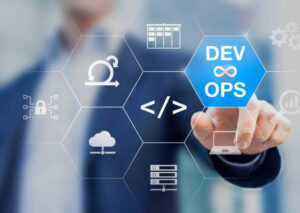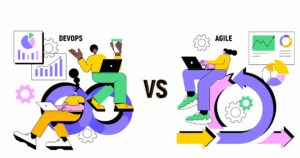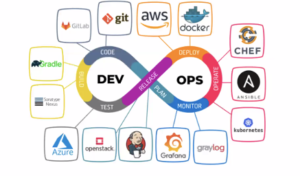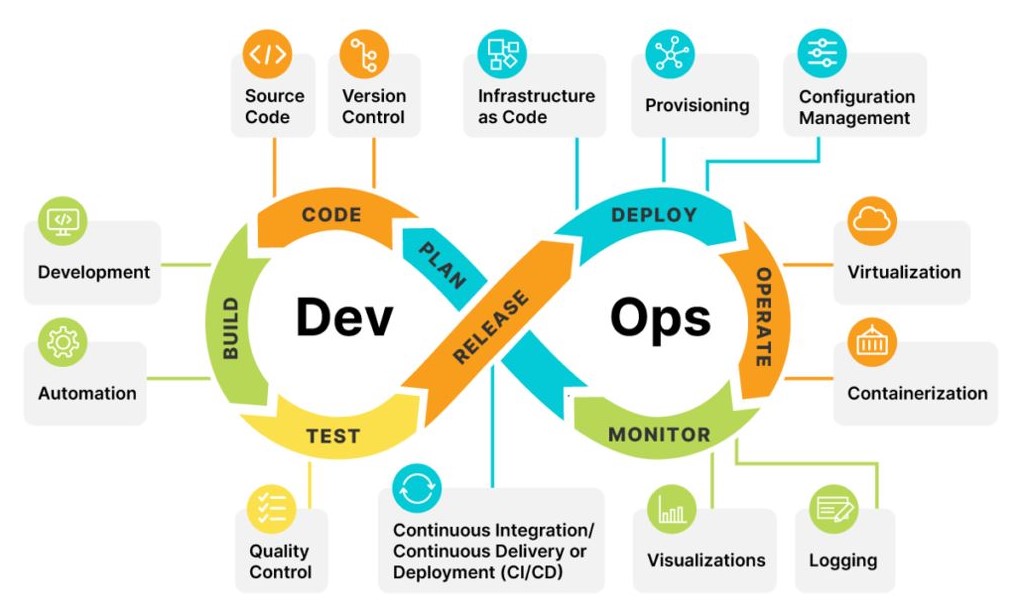Before we delve into the topic “DevOps”, we need to travel back in time to understand the basic concepts in history when there was the term “SDLC: Software Development Life Cycle”.

“SDLC” is a process for developing software from start to finish, sketching the roadmap from the initial idea or concept to the final completion of the product. In the bygone times, software delivery was followed by a chronicle progression of the development lifecycle. The SDLC framework was introduced in the 1960s and it took control of some prominent methodologies, For Instance:
⦁ Waterfall Model
⦁ Agile Model
⦁ Scrum Model
⦁ V-Model
⦁ Spiral Model
⦁ RAD Model
⦁ DevOps
Since there were some drawbacks in the models mentioned above before DevOps. As the development lifecycle of software products practically had to face the following flaws:
⦁ Flexibility
⦁ Complexity
⦁ Inefficient resource allocation
⦁ Lack of customers involvement
⦁ Higher risks of defects
⦁ Limited transparency and many more

Before the emergence of DevOps, there were usually two separate domains:
⦁ Development Domain
In the development domain, the development team had to gather and analyze the requirements of clients and make plans accordingly for creating and building software applications or systems. They focused on writing code, implementing new features, and ensuring the software met the desired requirements.
⦁ Operations Domain
The operations team was responsible for the deployment, configuration, and maintenance of the software in production environments. They focused on tasks such as server provisioning, software installation, system monitoring, and ensuring the software operated smoothly.
Both of these teams had to work separately and rely on each other. For example, if there was an issue in the software service or product from the development side, then the operations team would claim (that there was an issue detected in the code) and had to wait to proceed further, leading to a disconnect and lack of understanding between the two teams, resulting in challenges such as lengthy handover periods, frequent miscommunication, and slower time-to-market for software releases. Similarly, if the product was facing a problem on the server then the development team would blame the operations team for not doing their work properly.
To avoid this Blame Game, the term “DevOps” was innovated.
What is DevOps?
It is an approach that combines software development and information technology operations within a single organization to improve collaboration, communication, and integration between development and operations teams. With the help of this methodology, the traditional waiting time between these domains has been greatly reduced or eliminated entirely.
The following are some benefits of DevOps:
⦁ It has automated streamlined processes, resulting in quicker and more frequent ways for new features and updates to reach users, keeping them satisfied and engaged.
⦁ Teams can share knowledge, solve issues efficiently and deliver high-quality software.
⦁ Bugs and errors have been condensed due to automated testing that allows for early detection.
⦁ It has decreased the costs associated with manual efforts, infrastructure provisioning, and maintenance.
Following are the latest DevOps tools in 2020:
⦁ Ansible
⦁ Docker
⦁ GitHub
⦁ Jenkins
⦁ Kubernetes
⦁ Bitbuckets
⦁ Nagios
⦁ Gradle
⦁ Bamboo

Here are some most common services and tools that are used in DevOps:
⦁ For Monitoring and logging: Splunk
⦁ For Communication and Collaboration: Slack
⦁ For Orchestration and Containerization: Docker, Kubernetes
⦁ IaC (Infrastructure as code): AWS Cloud Formation, Azure
⦁ Configuration Management Services: Puppet, Chef
Real-time Applications of DevOps:
-
Microsoft:
Microsoft has adopted DevOps practices internally providing a range of tools and services to support DevOps workflows. For instance,
⦁ Azure DevOps (formerly known as Visual Studio Team Services)
⦁ Azure DevOps Server (formerly known as Team Foundation Server).
-
Google:
Google has a strong DevOps culture and is known for its adoption of the following:
⦁ Site Reliability Engineering (SRE)
⦁ Google Cloud Platform (GCP)
⦁ Google Kubernetes Engine (GKE) for container orchestration.
-
Amazon:
Amazon also supports DevOps practices like:
⦁ AWS Code Pipeline
⦁ AWS Code Commit
⦁ AWS Code Deploy
Conclusion:
DevOps is a collaborative approach that combines software development and operations to enhance the speed, efficiency, and quality of software delivery. It emphasizes automation, continuous integration and delivery, infrastructure as code, and a culture of collaboration and continuous improvement. By breaking down silos and promoting teamwork, DevOps enables organizations to deliver software faster, more reliably, and with improved customer satisfaction.

